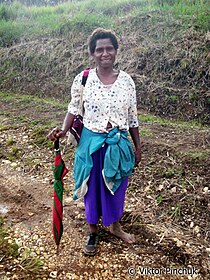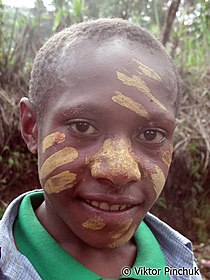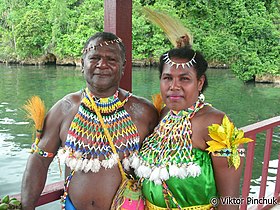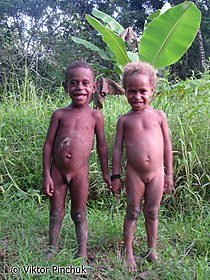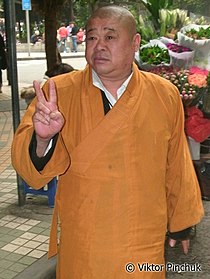Basics of fine-art photography/Creating portrait photographs

Portrait — a photographic image of a person, made fragmentary or full-length, where the focus is on the face.
Varieties and subgenres
[edit | edit source]A self-portrait is a picture of yourself, done with the help of a tripod or improvised means.
A family portrait is a picture of married couples, somethimes with children and other relatives (see Gallery, row I, Photos 3 & 4).
A group portrait is the same as a family portrait, but the people being photographed are not related (see Gallery, row I, photo 5).
Costume portrait is a portrait in which the person being photographed is dressed in stylized clothes of past centuries, costumes of fictional characters, etc. (see Gallery, row II, photos 3 & 5)
Headshot is a new term for a portrait taken with a digital camera, where the head and a small part of the shoulders occupy all the space of the frame (see Gallery, row I, photo 2; row II, photo 4).
Interesting results can be achieved by combining portrait and night photography. The background can be, for example, a view from the bridge to the night city; or an evening street decorated with neon lights. The flash is not needed, but the being portrayed should pose still for a few seconds, — during the action of exposure. It should be noted that if there are moving objects in the background — people or cars — their image will be blurred.
Approach methods
[edit | edit source]Creative — the primordial image is subsequently processed.
Open — the photograph is taken without the subject's knowledge (see Gallery, row II, photo 1).
Ecological — the subject is depicted in a familiar, peculiar environment (see Gallery, row II, photo 2).
Constructive — when the photographer builds an idea around the subject (see Gallery, row I, photo 1).
Lighting
[edit | edit source]Studio shooting presupposes the use of several options for the arrangement of light sources, the incorrectly application of which will appear deep shadows on the face, in addition, other mistakes are possible, therefore, for the photographer taking the first steps in portrait photography, it is advisable to practice in nature, using natural, — front and side, — sunlight. It is not a good idea to works at the midday, but if necessary, need turn on the forced flash. Use a sun lens hood to prevent side light from entering the lens (causing glare in the image).
Shutter speed and aperture values
[edit | edit source]Wide open aperture (f/2; f/2.8) will provide a shallow depth of field. If you focus on the subject's eyes, the rest of the face will be slightly blurred, allowing the eyes to stand out.
In good sunlight, a shutter speed of 1/125 s is sufficient. But first, you can practice in the automatic shooting mode.
Lens selection
[edit | edit source]You can use any lens for portraiture - a standard lens, a long focal length lens, a wide angle lens, but if you use the latter, remember that shooting at close range will lead to distortions: the person being photographed will not look like himself, as if he's a visitor House of mirrors.
Recommendation
[edit | edit source]It is desirable to position the subject so that he or she is looking into the lens: looking intently at the viewer will be a positive factor in drawing attention to the photo and person portrayed.
A portrait should evoke emotions, feelings, memories, to some extent revealing the inner world of the depicted.
More
[edit | edit source]You can do portrait photography in your own city or neighborhood, but the results will be much more interesting if you travel around the world with camera, in particular, using the method of hobo tourism, as the author of this material.
Gallery
[edit | edit source]Works by the author of the textbook, taken on a Papuan expedition
-
A woman in one shoe (Western Highlands, PNG)
-
War paint (Western Highlands, PNG)
-
A married couple (Western New Guinea, Indonesia)
-
Mother (Vanimo, PNG)
-
The perfect couple (Vanimo, PNG)
-
Monk (China)
-
Guard (Indonesia)
-
Khmer girl (Kambodia)
-
Dummy (Thailand)
-
A guy in a traditional suit (China)
